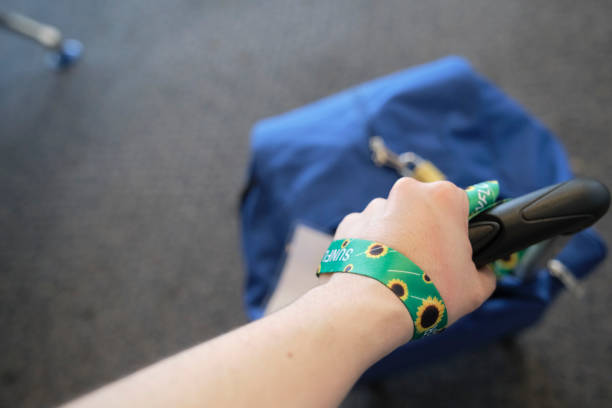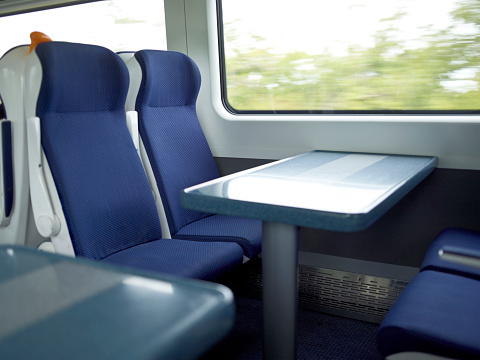When using public transport, I’ve found that sometimes I have to explain my disability. More commonly than not, this is when asking for a seat. I want the interaction to be easy and not have to explain my medical history to a stranger! The use of the lanyards and cards mentioned in this blog post could help in all areas of life.
Here are a few ways you could do this to make these interactions more straightforward;
Only share what you’re comfortable with
You don’t owe anyone your medical information. Please only share the information you are comfortable with. If you don’t want to discuss your disability, that’s okay. If you don’t want to use these communication aids, that’s also okay.
I’d like to think these cards or lanyards shouldn’t be needed, but I know many people find them helpful, myself included.
Sunflower lanyard

A sunflower lanyard shows others that you have a hidden condition or impairment. It’s dark green with a sunflower pattern. You can get them free at some supermarkets. You can also buy them for under £1 on the Hidden Disabilities website.
Hidden Disabilities sunflower lanyard
I’ve had a sunflower lanyard for a few years now and I find it really helpful. If I’m on a busy train, the lanyard allows passenger assistance to find me more quickly. It’s also a great place to put badges. Some of my badges are disability-related, and some are about my hobbies and other aspects of my life.
Please offer me a seat

If you find it difficult to stand while using public transport, you could use a card or badge to let others know you need to sit down. This is a scheme that was started in London.
Please offer me a seat (Transport for London)
I have a physical disability, but this can be hidden in certain circumstances. For me, it’s hard to stand for long periods of time. Yet it can be hard to approach a stranger and ask for their seat. I feel like this card would empower me to have more subtle conversations with people.
JAM card
I’ve only recently come across the JAM, and it makes sense! If you need more time to do something or find it hard to communicate, the Just A Minute (JAM) card might help.
It is an easy way to ask others for space or patience when using public transport. You could use this when:
- Buying a train ticket
- Asking a question at the information point
- Boarding the train
- Finding your train ticket
- Moving out of the way for other passengers getting off the train
Stickman communication cards
Stickman Communications really do have something for every disabled person. The idea is to have a card that easily explains your medical needs. There are so many different cards, including condition-specific information.
Here are a few that I thought were related to train travel:
- Difficulty speaking
- Disability buggy card
- Hidden mobility problem
- Mobility problems (any chance of a seat)
- No disability questions
I hope these things can help when explaining your needs when travelling by train. Don’t forget, you can also pre-book your assistance with Passenger Assistance. You can do this by using the Passenger Assistance app or website form.
About the Author

Chloe Tear is an award-winning disabled writer, speaker and advocate. In her blog, Chloe Tear, she writes about her lived experiences of being registered blind and having mild cerebral palsy. Chloe also works as a content designer within the charity sector. When she’s not writing, she can be found exploring new coffee shops, going to the theatre or playing Stardew Valley on the Nintendo Switch.